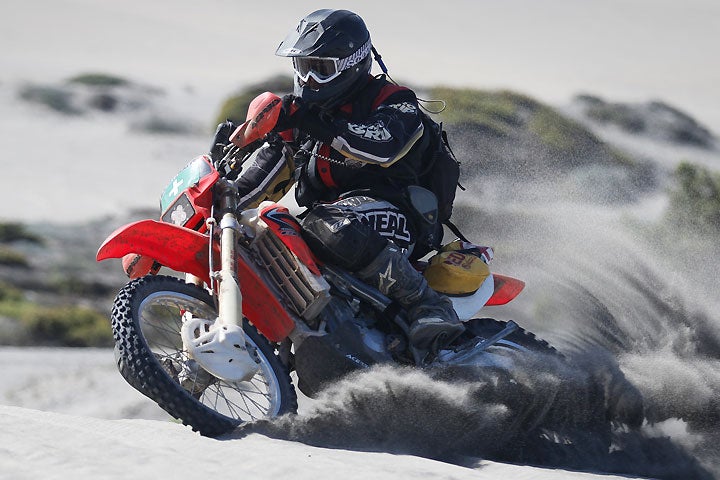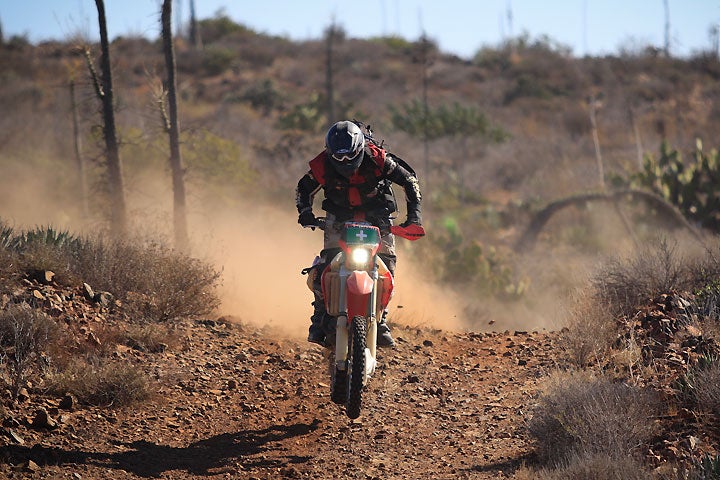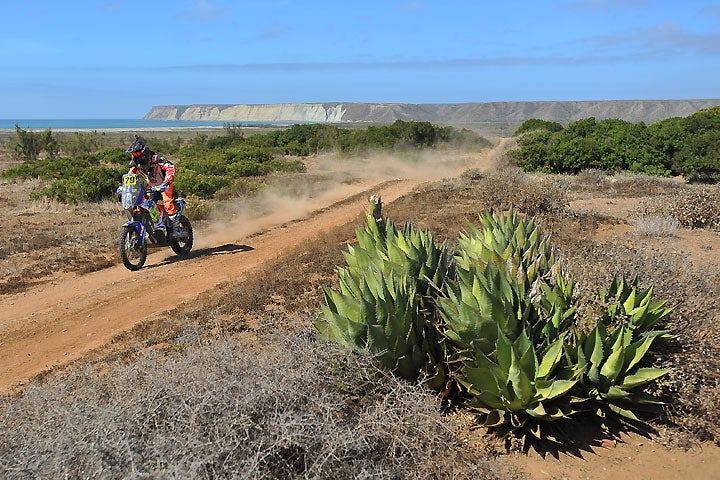It was 2013, and I was at REI, standing in the gadget section, trying to decide which GPS unit to purchase for my next Baja adventure.
After a long internal debate, I settled on the last remaining model on the shelf, thinking, “There’s only one left, so it’s got to be good.” Extending my hand toward the shelf, I notice in my peripheral vision another arm reaching for the same unit. WTF! Do I step aside and let him have it? Or move in faster to nab it before he does? What if he gets there first? Before I could act, a calm cool voice in a low raspy tone entered my ear. “Dude, looks like we want the same unit.” I caught a hint of laughter. After a little more chuckling and discussing which one of us needed it more, we resolved to flip a coin.
I won twice that day: the coin toss… And a friendship with a man they call “Scotty”–founder of the Baja Rally.

Soon, we discovered many things in common. We both love Baja, dirt bikes and surfing. When Scotty found out I was a firefighter, his eyes lit up. I was just the guy to join the moto medic team for the second installment of the Baja Rally (2.0). Having raced in the SCORE series years ago, I felt this was a chance to feel the rush of adrenaline and excitement again but with a different purpose. Instead of pursuing the finish line for myself, I would focus on helping other racers make it to the end. It would allow me to use my emergency medical skills to assist riders in need while utilizing my motorcycle abilities at the same time. This was a perfect match for me.
Now in my fourth year as a moto medic, I still enjoy every bit of it. As part of the medical team, moto medics put themselves out on the race course from dusk till dawn, enduring Baja’s wilderness and testing our riding skills on a challenging route just as the competitors do each day. This year, we had six Safety Team riders–Patrick Attardo, Randy Fish, Rob Evens-Davies, Ross Burden, Nick Hart and myself–divided into three groups. Additionally, three trucks, each one manned by either Jeremey Swallow, Mitch Martinez, Mick Miller or Carlos Munoz, ran chase/support for the crew. The eclectic group is comprised of firefighters, EMTs, nurses, as well as other governmental employees from Canada to San Diego. Most of these members are experienced in any type of emergency they could encounter. And their backgrounds keep them calm and clear-headed in crisis situations, as well as smooth communications over the radio which, believe or not, is paramount.
Due to the vast remoteness of the race course, medic riders have limited signal with their radios. Each moto medic has wired communications in their helmet. This allows them to listen and transmit messages on the fly if needed. “Safety Team One to Safety Team Two…” is the first call to action. From ground to ground, the radio signal is already limited to visual sight–meaning if we can’t see each other, we likely can’t speak with each other. But introduce mountains and valleys to the mix, and the signal is compromised significantly. To overcome this, the Baja Rally sends a radio team, named “Rally One,” up to the highest mountain top in the area, sometimes up to 8000 feet, and acts as a repeater for all the radio transmissions.

But again, Baja California’s desolate landscapes typically win the battle over signal, so the organization sends a plane into the air to circle overhead at approximately 7000-8000 feet when the race is too far out of range for “Rally One.” We hail the man in the sky as “Rally Air.” Rally Air and Rally One share the responsibility of listening to all radio traffic and repeating it to the necessary party so no information goes unheard despite their location on the race course. This allows constant communication throughout the race.
The Baja Rally attracts riders from all over the world. Although most are very experienced, seasoned off-road motorcyclists, they are not immune to injury. We have encountered riders with broken wrists, legs, collar bones and ribs. Some have been on the losing end of a cactus. Or incurred eye injuries, heat exhaustion and severe sickness–all unfortunately par for the course at an international rally raid. To treat these afflictions, we have medication and IVs which can be administered if needed. Splints, bandages and dressings are also some of the things carried by the Safety Team.
When the call goes out for a racer in need, everyone has a responsibility to act. Our job as the medic team is to provide the quickest care possible. The three moto medic teams are spread out so one team is near the top third of the pack, one at the middle and the latter as a sweep to ensure medics are always as close to the competitors as possible throughout each Special and Liaison stage. Our goal is to reach the ailing–whom includes racers, staff and spectators–as quickly as possible, assess their condition, and determine if extraction will be needed via ground or air. In some cases, the rider is unharmed, but mechanical problems have left them stranded. In any case, our job as a moto medic is to ensure all riders arrive safely to the Finish line or back with their teams. When an emergency exists with enough seriousness, we will dispatch the medical helicopter crew to our location for the quickest extraction and transport time to the hospital.

With each passing year, I have seen the Baja Rally become more experienced, organized and prepared to deliver a successful race for everyone involved. Almost all racers I have talked to, and even those who’ve needed my help, expressed their enjoyment of the rally. From Baja’s beautiful landscape to the course layout, to knowing they have a good medical support, makes this race one of their favorites.
And the team puts in a lot of effort throughout the year to keep it that way. After each event, the staff and medical support team gets together and critiques the overall performance–discussing the things that went well and the things we can improve upon. We strive to better ourselves so that each coming year the rally runs as smoothly as possible.
But the most important aspect with our Safety Team, or any emergency medical team for that matter, is the individual personalities. Believe or not, we need all get along. Each one of us has a role to play. Whether it’s giving orders or receiving orders, respect is passed up the chain of command as well as back down. This year, we led that example and provided a successful service to the race and each other. Having another calendar year click by, I was honored to spend more time with this bunch of dedicated hard-working people: the Baja Rally staff, the media crew, racers, the medical team and the moto medics. We have become a tight group no doubt, both in professionally and personally. In doing so, we assist these many passionate racers live out their dreams. We help ensure the safety of an entire event.
And, last but not least, we continue to make friendships that will last a lifetime.
Eric Hingeley is a four-year moto medic and fire fighter living in Southern California–Editor.
 Your Privacy Choices
Your Privacy Choices